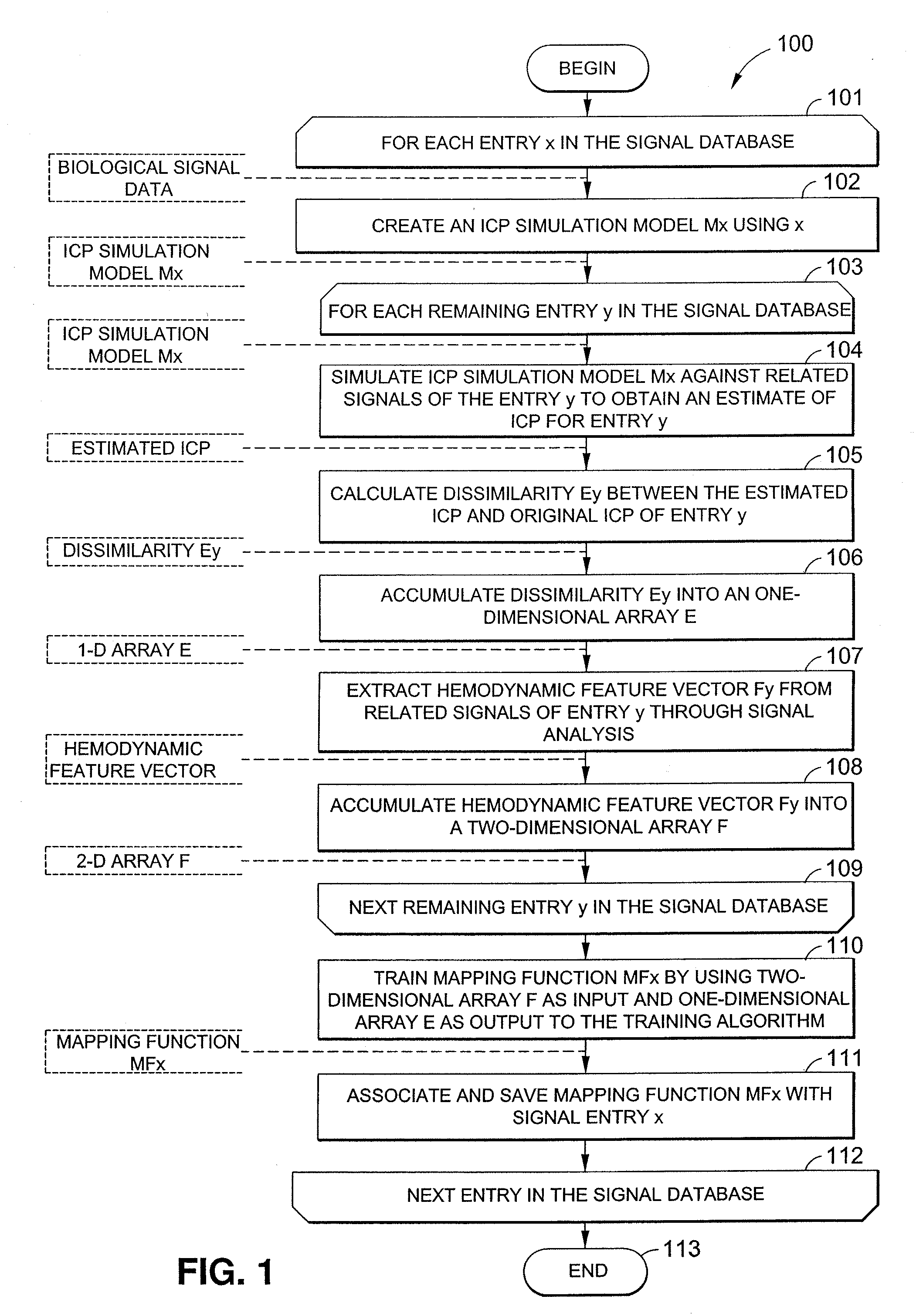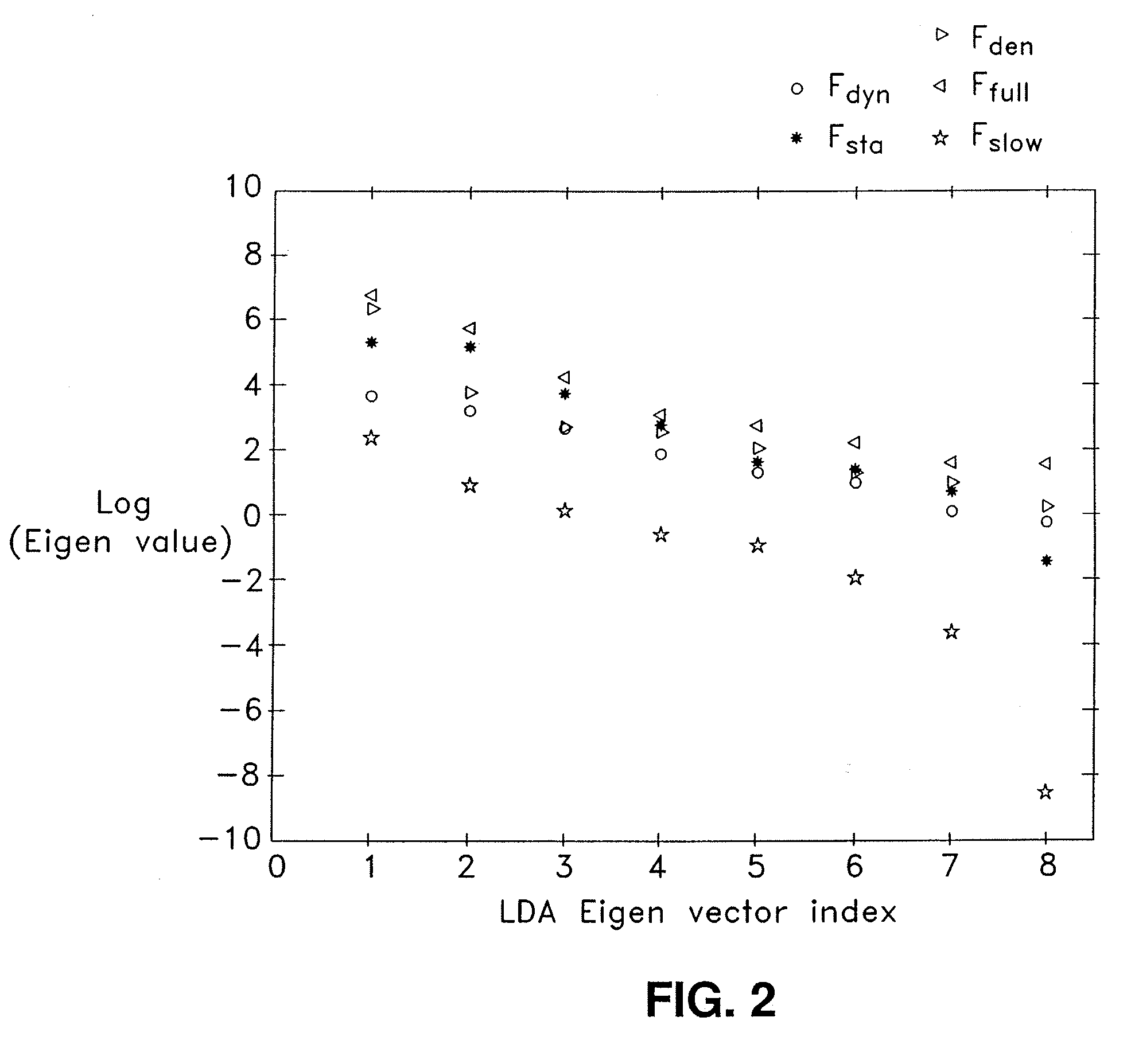Data mining system for noninvasive intracranial pressure assessment
a data mining and intracranial pressure technology, applied in adaptive control, applications, instruments, etc., can solve the problems of inability to accurately express the principles of intracranial pressure, inability to perform invasive procedures, and inability to be clinically accepted
- Summary
- Abstract
- Description
- Claims
- Application Information
AI Technical Summary
Benefits of technology
Problems solved by technology
Method used
Image
Examples
Embodiment Construction
[0038]In certain embodiments, a system for simulating ICP using various biological signal data is proposed. In some embodiments, biological signal data such as continuous arterial blood pressure (ABP) cerebral blood flow velocity (CBFV), and observed ICP may be used to simulate unobserved ICP. This simulation may be supplemented by using data on hemodynamic features extracted from measured ABP and CBFV. In certain embodiments, the system is flexible in incorporating other relevant signals besides ABP, CBFV and ICP into the database. Certain embodiments of the system allow for designing new hemodynamic feature vectors and for adopting new models for ICP estimation.
[0039]While the embodiments of the systems and methods disclosed herein relate to estimating ICP values through noninvasive procedures, these methods and systems can be used in determining other conditions, and any other random variable may be estimated using these systems and methods. For example, risks of disease or morta...
PUM
 Login to View More
Login to View More Abstract
Description
Claims
Application Information
 Login to View More
Login to View More - R&D
- Intellectual Property
- Life Sciences
- Materials
- Tech Scout
- Unparalleled Data Quality
- Higher Quality Content
- 60% Fewer Hallucinations
Browse by: Latest US Patents, China's latest patents, Technical Efficacy Thesaurus, Application Domain, Technology Topic, Popular Technical Reports.
© 2025 PatSnap. All rights reserved.Legal|Privacy policy|Modern Slavery Act Transparency Statement|Sitemap|About US| Contact US: help@patsnap.com



